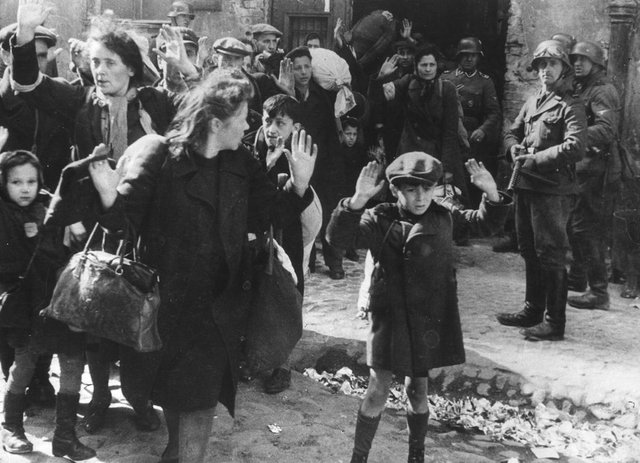
From the beginning of the war in 1939, until the summer of 1941, tens of thousands of Jews were murdered due to the effects of the German occupation policy. Upon the German invasion of the Soviet Union, the Nazis introduced the plan for the systematic murder of European Jewry known as "the Final Solution of the Jewish Problem".
Beginning on June 22, 1941, death squads (Einsatzgruppen) consisting of SS and German police, in conjunction with German army units, began the systematic annihilation of the Jews of Eastern Poland and the Soviet Union- at first mainly men, but later women and children too. In the southern regions of the occupied Soviet Union tens of thousands of Jews were murdered by Romanian army units.
In the autumn of 1941, the systematic murder of Jews began in Yugoslavia. Alongside the death squads there were cases where local antisemites also took part in the killing. Meanwhile, the Nazis began planning to extend their annihilation policy to additional areas throughout Europe.
The first extermination camp, Chelmno, began operating in December 1941 where hundreds of thousands of Jews from Western Poland (the Wartegau, which had been annexed to Germany), were killed.
The Wannsee Conference held in Berlin in January 1942 served as a milestone in the evolution of the Final Solution. Senior Nazi officials discussed the implementation of the Final Solution in its Pan-European context with various agencies coordinating actions in order to set it in motion.
Three extermination camps were built in the "Generalgouvernement" area (occupied Poland): Belzec, Sobibor and Treblinka. Beginning in 1942, Jews from all over Europe were deported mainly to the Auschwitz-Birkenau concentration and extermination camps. This complex became the primary site for the annihilation of European Jewry after the other extermination camps were closed. Activity at Auschwitz reached its peak in the summer of 1944, where hundreds of thousands of Jews from the Lodz Ghetto, Slovakia, and especially Hungary were murdered there.
The heaviest deportations took place during the summer and fall of 1942, when more than 300,000 people were deported from the Warsaw ghetto alone. Fed up with the deportations, disease and constant hunger, the inhabitants of the Warsaw Ghetto rose up in armed revolt.
The Warsaw Ghetto Uprising from April 19-May 16, 1943 ended in the death of 7,000 Jews, with 50,000 survivors sent to extermination camps. In late 1943, Jews from regions who had survived the previous deportations were sent to their death, primarily to the Majdanek extermination camp.
The last victims of the Final Solution were about a quarter of a million Jewish camp prisoners who died on the death marches. These marches were the mass evacuation of prisoners from Poland and the Baltic states to Germany due to the Red Army's advance.
Though the Nazis tried to keep operation of camps secret, the scale of the killing made this virtually impossible. Eyewitnesses brought reports of Nazi atrocities in Poland to the Allied governments, who were harshly criticized after the war for their failure to respond, or to publicize news of the mass slaughter.
TO LEARN MORE ABOUT HISTORICAL EVENTS IN the 1940s VISIT History0x